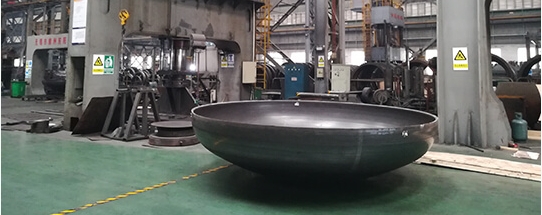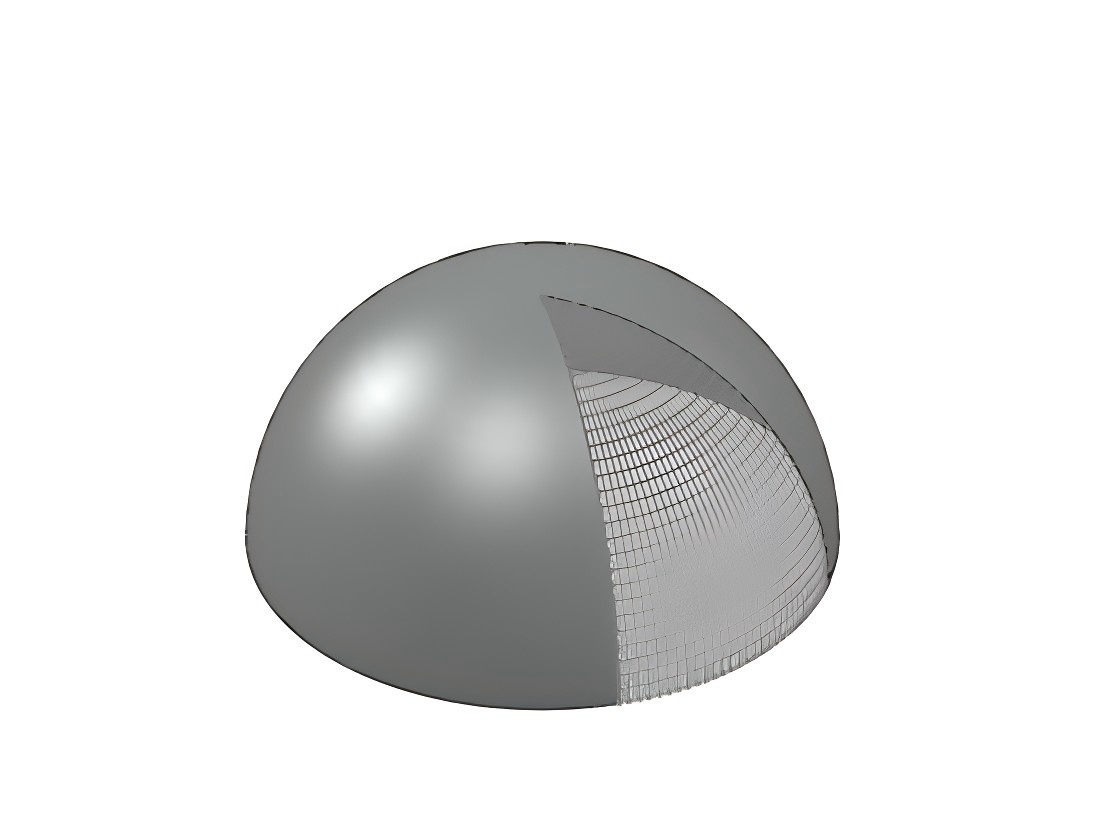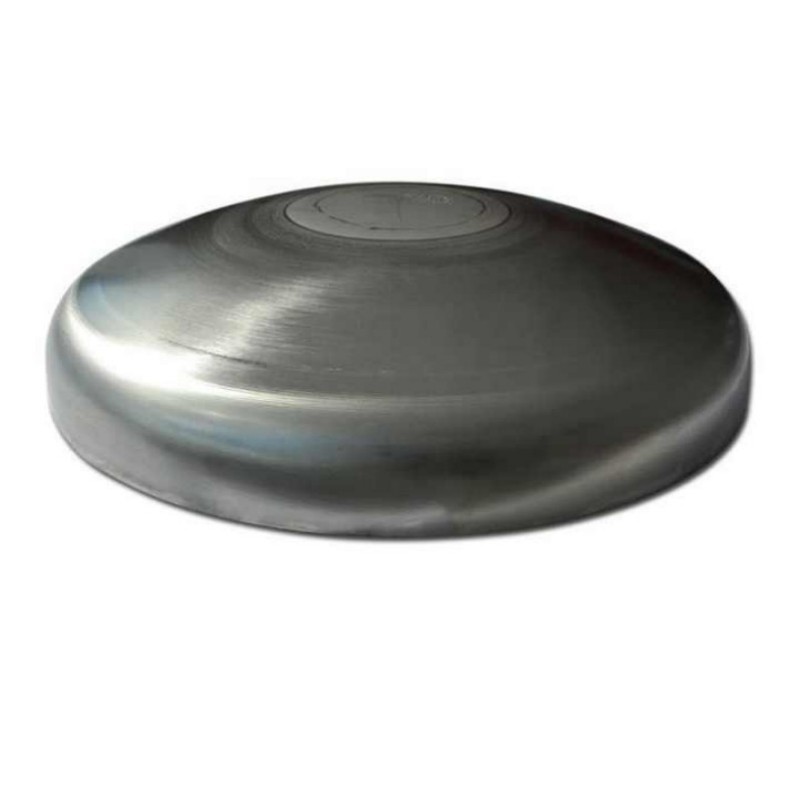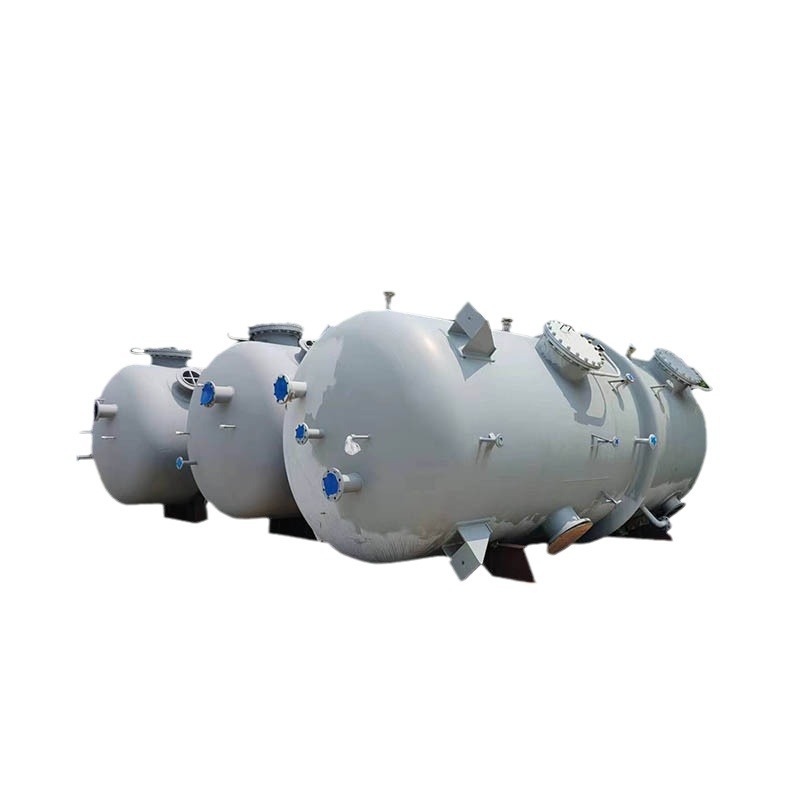Buckling Analysis of Dished Head Under External Pressure
Upload Time:
Dec 17, 2024
The buckling analysis of dished heads under external pressure is vital for ensuring the structural integrity and safety of pressure vessels.
The buckling behavior of a dished head under external pressure is an important consideration in pressure vessel design. Finite element analysis (FEA) is commonly used to study this problem, helping engineers understand where buckling may occur based on the stress distribution in the dished head. This analysis uses advanced techniques such as the Newton-Raphson method and the Arc-length method for nonlinear buckling analysis. These methods trace the structural characteristics during buckling instability, providing insights into the failure behavior of the head under varying external pressures.
To ensure that the dished head can safely withstand the applied pressures, a stability safety factor is introduced. This safety factor is critical for processing finite element analysis results, allowing engineers to determine the maximum permissible external pressure that can be applied without compromising the integrity of the structure. The approach and findings from this analysis play a crucial role in optimizing the design and ensuring the reliability of dished heads in pressure vessels.
Buckling Analysis Techniques
In structural analysis, two main techniques are used to evaluate buckling loads and buckling modes: eigenvalue buckling analysis and nonlinear buckling analysis. Both have distinct applications and benefits.
Eigenvalue Buckling Analysis
Eigenvalue buckling analysis is a linear analysis method that is often used in preliminary studies. This technique predicts the critical load at which buckling will occur by solving for the eigenvalues of the structure under applied load. However, eigenvalue analysis does not account for nonlinearities, such as material behavior, boundary conditions, or initial imperfections, which can significantly influence the actual buckling load. As a result, eigenvalue buckling analysis tends to overestimate the critical load compared to real-world conditions.
Because of its limitations, eigenvalue buckling analysis is typically not used for final design assessments in engineering. Instead, it serves as an initial step for understanding the general buckling behavior and identifying potential buckling modes in the structure.
Nonlinear Buckling Analysis
Nonlinear buckling analysis, on the other hand, is a more accurate and comprehensive method. This technique involves gradually increasing the applied load while accounting for the structural nonlinearities, including initial imperfections, material nonlinearities, and nonlinear boundary conditions. By doing so, nonlinear analysis can more accurately determine the actual critical load at which the structure will become unstable.
Nonlinear buckling analysis provides results that are much closer to real-world engineering scenarios because it incorporates factors that eigenvalue analysis ignores. This makes it a more reliable tool for evaluating the buckling behavior of structures, especially under complex loading conditions.
Practical Approach for Buckling Analysis
While nonlinear buckling analysis offers more realistic results, it is computationally more expensive and time-consuming than eigenvalue buckling analysis. For this reason, engineers often use a two-step approach when analyzing buckling in pressure vessel components like dished heads:
Initial Eigenvalue Buckling Analysis: The first step is to perform an eigenvalue buckling analysis to quickly identify potential buckling modes and estimate the critical load. This provides a preliminary understanding of the buckling behavior and helps in identifying key regions that may require more detailed analysis.
Nonlinear Buckling Analysis: After obtaining insights from the eigenvalue analysis, a more refined nonlinear buckling analysis is performed. This step incorporates initial imperfections and actual loading conditions, providing a more accurate determination of the critical load and the corresponding buckling modes.
Conclusion
To ensure that the dished head can safely withstand the applied pressures, a stability safety factor is introduced. This safety factor is critical for processing finite element analysis results, allowing engineers to determine the maximum permissible external pressure that can be applied without compromising the integrity of the structure. The approach and findings from this analysis play a crucial role in optimizing the design and ensuring the reliability of dished heads in pressure vessels.
Buckling Analysis Techniques
In structural analysis, two main techniques are used to evaluate buckling loads and buckling modes: eigenvalue buckling analysis and nonlinear buckling analysis. Both have distinct applications and benefits.
Eigenvalue Buckling Analysis
Eigenvalue buckling analysis is a linear analysis method that is often used in preliminary studies. This technique predicts the critical load at which buckling will occur by solving for the eigenvalues of the structure under applied load. However, eigenvalue analysis does not account for nonlinearities, such as material behavior, boundary conditions, or initial imperfections, which can significantly influence the actual buckling load. As a result, eigenvalue buckling analysis tends to overestimate the critical load compared to real-world conditions.
Because of its limitations, eigenvalue buckling analysis is typically not used for final design assessments in engineering. Instead, it serves as an initial step for understanding the general buckling behavior and identifying potential buckling modes in the structure.
Nonlinear Buckling Analysis
Nonlinear buckling analysis, on the other hand, is a more accurate and comprehensive method. This technique involves gradually increasing the applied load while accounting for the structural nonlinearities, including initial imperfections, material nonlinearities, and nonlinear boundary conditions. By doing so, nonlinear analysis can more accurately determine the actual critical load at which the structure will become unstable.
Nonlinear buckling analysis provides results that are much closer to real-world engineering scenarios because it incorporates factors that eigenvalue analysis ignores. This makes it a more reliable tool for evaluating the buckling behavior of structures, especially under complex loading conditions.
Practical Approach for Buckling Analysis
While nonlinear buckling analysis offers more realistic results, it is computationally more expensive and time-consuming than eigenvalue buckling analysis. For this reason, engineers often use a two-step approach when analyzing buckling in pressure vessel components like dished heads:
Initial Eigenvalue Buckling Analysis: The first step is to perform an eigenvalue buckling analysis to quickly identify potential buckling modes and estimate the critical load. This provides a preliminary understanding of the buckling behavior and helps in identifying key regions that may require more detailed analysis.
Nonlinear Buckling Analysis: After obtaining insights from the eigenvalue analysis, a more refined nonlinear buckling analysis is performed. This step incorporates initial imperfections and actual loading conditions, providing a more accurate determination of the critical load and the corresponding buckling modes.
Conclusion
The buckling analysis of dished heads under external pressure is vital for ensuring the structural integrity and safety of pressure vessels. While eigenvalue buckling analysis provides a quick overview, nonlinear buckling analysis offers a more accurate and realistic prediction of critical loads. By combining both methods, engineers can achieve a more reliable and optimized design, ensuring that the dished head can safely withstand the operational pressures it will face in service.

Relevant News







